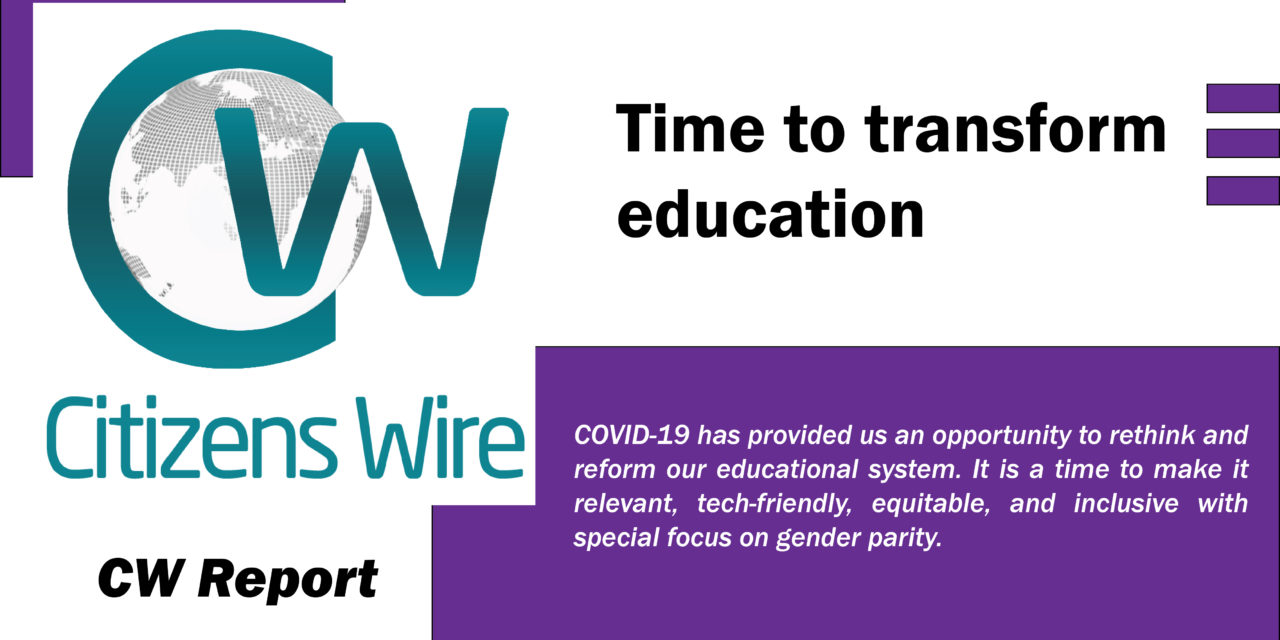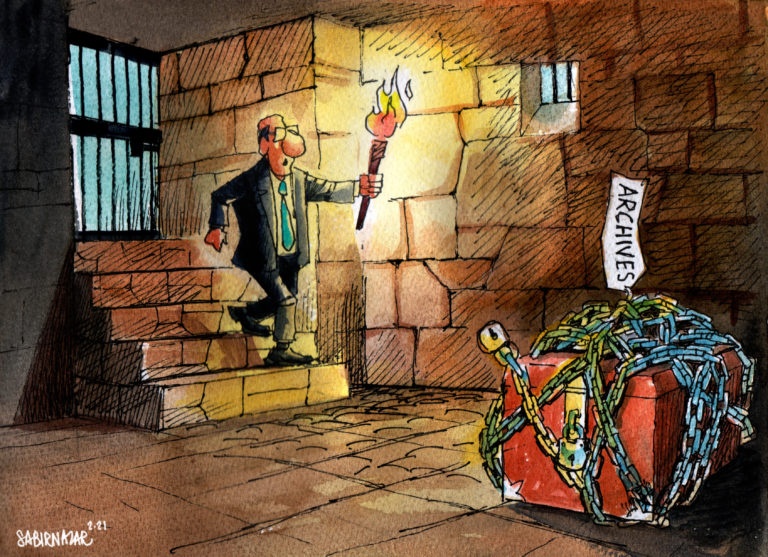CW-Report
Making sure all girls are finishing secondary education by 2030 could boost the gross domestic product (GDP) of developing countries by 10% on average over the next decade, says a report by Plan International. It says ‘every single dollar ($1) spent on girls’ rights and education would generate a $2.80 return – equivalent to billions of dollars in extra GDP.
The report calls for COVID-19 recovery plans that prioritize investment in girls’ education and well-being as it will help communities and economies build back better and stronger. According to UNESCO some 130 million girls worldwide were already out of school before pandemic and more than 11 million may not return to classes after the pandemic. UNICEF in its report fears that girls are more likely than boys to miss out school. Many families choose to invest in sons over daughters, while violence, poverty and child marriage also impact their access to education. Some low-income countries could struggle to ensure that all girls are completing their schooling within the next decade, the report warns. However eradicating barriers to girls’ education and development may hold the key to achieving many of the Sustainable Development Goals (SDGs) therefore action was needed to tackle gendered barriers to education.
Nevertheless the COVID-19 has provided us an opportunity to rethink and reform our educational system. It is a time to make it relevant, tech-friendly, equitable, and inclusive with special focus on gender parity. This will be possible only when we will make prudent and futuristic investments in the sector. COVID-19 has brought home a realization that we have to drastically transform our education system. Creative on-line learning solutions and virtual classrooms with qualified subject experts can salvage during the pandemic.
Rooted in Goal 4 of the 2030 Agenda for Sustainable Development – to “ensure inclusive and equitable quality education and promote lifelong learning opportunities for all” the government as well as all relevant stakeholders, shall focus on transforming education and how these efforts may contribute to the achievement the 2030 Agenda for Sustainable Development.
Global statistics remind us that significant transformations are still required to make education systems more inclusive and accessible as today:
(1) Only 10% of people have completed upper secondary education in low income countries; (2) 40 % of the global population is not taught in a language they speak or fully understand; and (3) over 75 % of secondary school age refugees are out of school. In addition, indigenous youth, young people with disabilities, young women, young people belonging to vulnerable groups or in vulnerable situations, etc. are facing additional challenges to access education that respects their diverse needs and abilities as well as reflects and embraces their unique realities and identities.
Making education more relevant, equitable and inclusive is crucial to achieving sustainable development. Education is a ‘development multiplier’ in that it plays a pivotal role in accelerating progress across all 17 Sustainable Development Goals, be it poverty eradication, good health, gender equality, decent work and growth, reduced inequalities, action on climate or building peaceful societies. Education should lead to effective learning outcomes, with the content of school curricula and pedagogy being fit for purpose, not only for the 4th industrial revolution and the future of work and life, but also for the opportunities and challenges that rapidly changing social contexts bring.
Pakistani context;
Sometimes statistics hidden within the statistics reveal quite a strange story. The real situation of peripheral areas is often tone downed in aggregated statistics. Marred with an unpleasant record, Pakistan continues to fail to bring a halt to its increasing female drop-out rate in the education sector. A well research report by a civil society organization; Awaz Foundation Pakistan: Centre for Development Services narrates the story of 14 southern districts of Punjab and notices a positive correlation between girls’ years at school and prospects of their better life including increased family income.
The focus of research is quality secondary education for girls as the Constitution commands to provide free and compulsory education up to this level. The provision of free education appears to be a distant dream and the economic status of families continues to define the years of schooling children can afford. In poor communities as in the South Punjab due to financial constraints the boys schooling is preferred over that of the girls. Besides this aspect there are many other cultural barriers that hinder girls’ chances and opportunities to climb the education ladder.
The data collected by ‘Umang’ (desire) champions for girl’s education offers valuable insights from the grass-roots that can be a good evidence for future policies. Amongst, a myriad of societal reasons that lead to the high drop-out rates of females enrolled in educational institutes, a potent one is familial income. Fiscal needs from enrollment fees, tuition deposits, uniform’s cost and resources needed at home often does not add up to the worth they view education is. Due to economic compulsions girls are made to stay busy in household tasks and are groomed in an environment where their purpose remains domesticated.
In 2018 alone a record 2 million girls were out of middle and high schools as compared to boys. While poverty poses hurdles to affording education, there is an ingrown bias to prefer to educate sons. This results in females being married at an earlier age than boys. Shockingly such bias is present within both urban and rural settings. A prejudice that is rooted in believing in traditional gender roles, sons are expected to perform instrumental roles for the family while daughters take up the emotive role. Children are actively groomed in a culture that promotes these norms; despite popular belief urban areas as well continue to hold a pseudo-progressive mindset that also directly or indirectly contributes to upholding early marriages for females as the status quo.
Educational attainment of girls can be mirrored by parental attitudes towards gendered preference for education. The Net Enrolment Rate of girls in secondary education in rural Punjab is at 7%, urban-major cities noted to be at 24%, the research survey revealed that 42% of the parents thought boys education to be preferred as their ultimate metanarrative was seen to be supporting the family financially. As a result, boys are seen to be more deserving or in need of education. Similarly, 2.2% of the parents saw girls as a financial burden that would eventually be in need of dowry; meaning spending money on them would essentially be money down the drain.
The other part of this story is the underutilization of school systems that become a contributing factor to girls dropping out. The Government primary schools are usually lacking facilities as well as qualified and trained teaching staff. 28% of rural habitats in Punjab are more than 2km away from the nearest government girls’ schools. This makes it difficult for families belonging to lower income brackets to send their children to school. This idea was reiterated by statistics showing 17% of households in Punjab saw school distance as the main reason for not sending their daughters to school. This may be interlinked to safety concerns and or cultural-financial capital concerns of the parents in regards to distance. Often times it is this reason that backs the other arguments in molding parental and societal mindsets.
With an underfunded school with lack of facilities parents find investing in their child’s education to be unfit and children tend to have shoddier performance in schools with a lack of adequate resources and teachers. All in all supporting the initial notion of the parents that deems education to be inept if when investing in their daughter still does not do well despite it being no fault of their own
The study follows up for there to be noteworthy differences when educational institutes invest into the quality of the institute, be that by hiring and training teachers, establishing a good curriculum and facilities or by creating a good environment for the teachers and students. The importance of investing in these areas can be viewed in a three-tier manner. Firstly, by providing with facilities parents as well as the students would feel safer with girls attending schools. This may range from providing for sanitary facilities to a reliable transport system to and from school. Secondly, trained teachers and a good curriculum would lead to pupils’ own grown interest in school raising not only the enrollment rates but the attendance as well. Lastly, by providing for a good environment for teachers, they are more likely to perform better at their job creating a more uplifting their students making both students and teachers to be more involved and consistent.
To attain ideal non-discriminatory ratios between girls and boys in the education may be achieved by appointing good teachers, effective educational management as well as the students based on merit, focus on innovation and creative thinking while actively working on those ideas, consistent examination and result based management and lastly to create new e-platforms for education. The report advocates for establishing South Punjab Girls Education Support Fund to achieve these goals and offer better deal to talented girls from the periphery. This will be a futuristic investment keeping in view the ground realities. Statistics reveal that only 17% of women in rural areas could read and write as compared to 47% in urban areas, these discrepancies can only be leveled out by a well-articulated plan supported with adequate funds.


